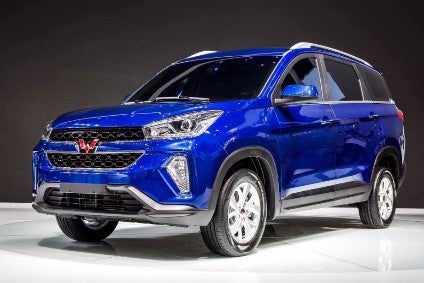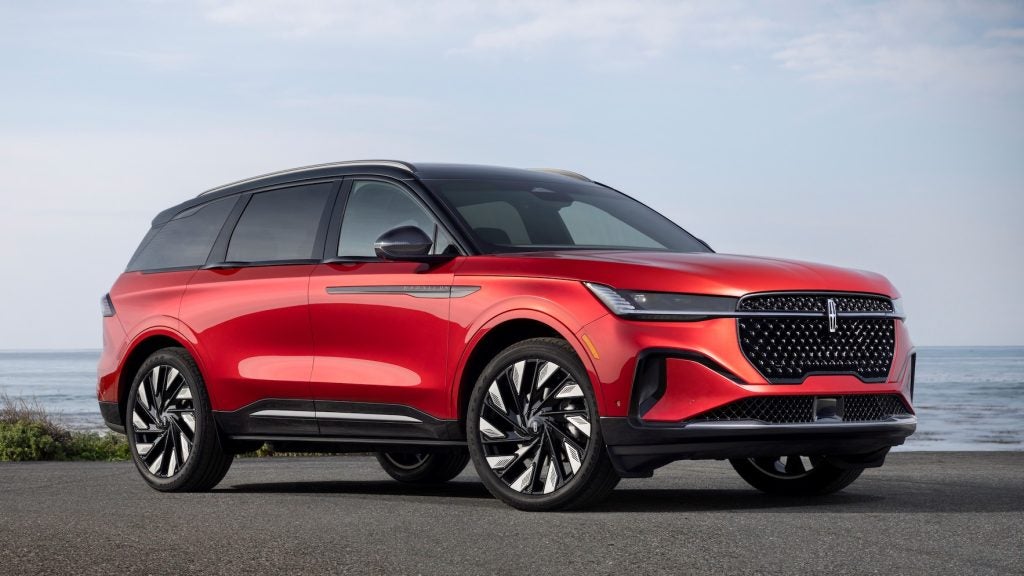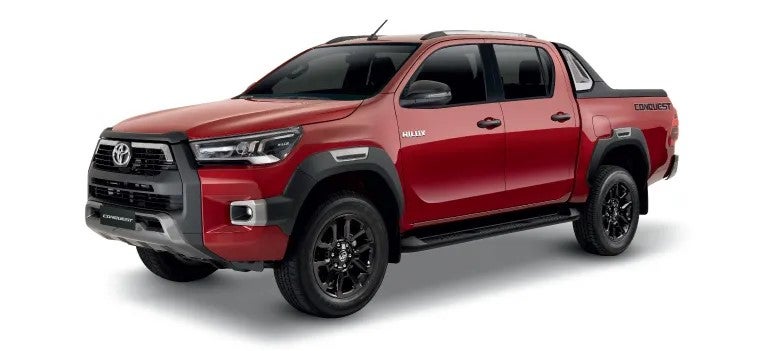
Baojun and Wuling are two of the best selling brands in China, and each is controlled by the SAIC General Motors Wuling joint venture. This is the first part of a look into each of GM’s passenger vehicles divisions and their worldwide models, both current and future.
Background and Manufacturing
How well do you really know your competitors?
Access the most comprehensive Company Profiles on the market, powered by GlobalData. Save hours of research. Gain competitive edge.

Thank you!
Your download email will arrive shortly
Not ready to buy yet? Download a free sample
We are confident about the unique quality of our Company Profiles. However, we want you to make the most beneficial decision for your business, so we offer a free sample that you can download by submitting the below form
By GlobalDataSAIC holds 50.1 per cent of SGMW and Wuling Motors controls 5.9 per cent. GM has a 44 per cent stake.
SAIC-GM-Wuling Automobile Co., Ltd. (SGMW) is a joint venture that was founded in November 2002. State-controlled SAIC holds 50.1 per cent of SGMW and Wuling Motors controls 5.9 per cent. GM has a 44 per cent stake, having bought an extra 10 per cent from Liuzhou Wuling Motors in November 2010.
SGMW is based in Liuzhou, Guangxi Zhuang Autonomous Region, in southwestern China. There is a second manufacturing base in Qingdao, Shandong, and a third production site in Chongqing Municipality. The joint venture manufactures Wuling brand light commercial vehicles and minivans as well as Baojun passenger vehicles.
Baojun
As at the end of May, the Wuling Hong Guang remains China’s best selling vehicle, its sales having reached 226,510 which places it comfortably ahead of the VW Lavida/Gran Lavida, their combined total being 220,363 units.
A big change for SAIC GM Wuling in recent times however, is the rise of the Baojun brand. The 730 minivan has racked up 115,907 registrations over the first five months with the 560 crossover being the second best selling model for the low cost brand, with 85,076 cars delivered, ahead of the rapidly rising 510, a B segment SUV, 72,197 examples of which had been sold by 31 May.
Baojun’s first EV will be similar in concept to the smart fortwo electric drive.
The smallest Baojun model is yet to be launched. The E100 is to be a tiny plug-in hatchback which shares some styling features with the former smart fortwo. It is expected to be on sale in China later in 2017.
Prototypes have been seen in near-production spec. SAIC has previously stated that the car’s name is meant to represent a 100km/h top speed. The range is expected to be between 100 and 160km. The 2,488mm long E100 will have seating for just two occupants.
The 330 replacement is almost certain to use a new GM-SAIC small car architecture.
The 330 joined the Baojun range in November 2015. This 4.3m long sedan is based upon the previous Chevrolet Sail and is powered by a 1.5-litre GM-sourced four-cylinder petrol engine. No changes are expected until 2019, which is when a facelifted model should appear. The 330 replacement is almost certain to use a new GM-SAIC small car architecture.
The 310 is a hatchback version of the 330 and as such, it is based upon the previous Chevrolet Sail. This model’s public debut was at April 2016’s Beijing motor show and the car entered production four months later, going on sale in September 2016. A facelift should arrive in 2019 and a replacement in 2023. This will be some months after the arrival of the next generation 330. Like that car, the next 310 be based upon the future GM-SAIC small car architecture.
The new 310 Wagon, SGMW’s first estate, may open up a new segment.
SGMW revealed the 310 Wagon at Auto Shanghai 2017. This five-seat estate is 4,620mm long, 1,710mm wide and 1,535mm high (including roof bars). The boot’s stated capacity is 740 cubic litres with the rear seat in place and double that when folded flat. As for the 330 and 310, a mid-cycle update should be launched in 2019 and a successor in 2023.
The 510 is a very recent success story. This is not only the market’s new number nine best selling model (24,108 sold in May) but it is also now ahead of the 310 hatchback and wagon (a combined 69,150 units). This 4.2m long SUV had its world premiere at the Guangzhou motor show in November 2016. Sales in China commenced in February 2017 and prices start at an affordable Yuan 54,800. SAIC GM will likely facelift the 510 in 2020 and replace it in 2024, basing the second generation model on its future small car platform.
The 560 was another additional model for the joint venture. It had its world premiere at the Shanghai motor show in April 2015, going on sale in China three months later. This 4,620mm long crossover is powered by a 101kW 1.8-litre VVT-iTECH aluminum engine.
SGMW says the Baojun 560 “is built on a Lotus chassis developed to maximise comfort and handling”. The body structure consists of more than 55 per cent high-strength steel. The architecture is an adaptation of General Motors’ Global Delta. A facelift should take place in 2019. The 560’s successor is due in 2022.
The 630 is way down the sales charts, with only 1,219 units sold for the year to date.
The 630 is way down the sales charts and fading fast, with only 1,219 units sold for the year to date. This C segment sedan was Baojun’s first model, having gone on sale in 2011. Developed in Australia by GM Holden, the 630 is a rebodying of the Buick Excelle, though the Baojun has a longer wheelbase. The platform was derived from the architecture introduced by the Daewoo Nubira in 2003.
Small scale production of the 630 started in November 2010 on the 8th anniversary of the founding of the SAIC GM Wuling joint venture.
The vehicle itself was previewed at the World Expo in Shanghai earlier in 2010, badged as the ‘Wuling Demo Car’. In July 2010, SGMW revealed that the car would be launched under a new brand, ‘Baojun’, which translates as ‘Treasured Horse’. The 630 debuted in production form at the Guangzhou motor show in December 2010.
The 630 officially went on sale in eight Chinese cities in August 2011 priced from CNY 62,800. It was also the first model to be built at a then-new plant which SGMW opened at Liuzhou in November 2012. The car was already in production at another facility in the same city.
A minor facelift for the 630 was revealed at the Shanghai motor show in April 2013 and went on sale in China immediately afterwards.
The 630 was launched in certain African markets in 2014, badged as the Chevrolet Optra. Both these sedans are due to be phased out by the end of 2017. Several newer crossovers/SUVs have already replaced them in the Chinese market and SGMW will likely export one or more to the relevant countries in North Africa.
The Baojun 610 is a five-door hatchback version of the 630. It was first seen at April 2014’s Beijing motor show and went on sale days later. It is powered by the choice of 1.5- or 1.8-litre engines. The 610 is also expected to be phased out later in 2017.
The 730 had its chassis tuned by Lotus Engineering.
The 730, a low-priced minivan, had its world premiere at the Beijing motor show in April 2014 and went on sale in China three months later. It is powered by the same four-cylinder petrol engines as the Baojun 610 and 630. The 730 has McPherson front suspension and torsion beam rear suspension. Both were tuned by Lotus Engineering. A restyle should go on sale in 2018, to be followed by a second generation 730 in 2021.
Wuling
SGMW has only a small range of models, yet it punches way above its weight in the Chinese market, selling 667,629 passenger vehicles in 2016. The emphasis has traditionally been on a small but well priced range of passenger vans and this formula has worked perfectly for the Wuling brand. Now, with the Communist Party’s decision to encourage OEMs to introduce more ‘NEV’ (New Energy Vehicles) models, SAIC GM Wuling is developing EVs too.
A small Wuling electric car is expected to go on sale in China later in 2017. It is likely to be closely related to the Baojun E100.
From a future model to Wuling’s oldest vehicle now. The Sunshine and its derivatives, whilst technically classed as delivery vans in China, can be ordered with up to eight seats and so serve the needs of families and small businesses perfectly. Production first commenced in 2002. SGMW has launched several other models into the segment which was once controlled by the Sunshine, which is why SGMW has chosen to let this former big seller become so old.
The Rongguang is also known as the Wuling Glory and in certain markets outside China, it is the Chevrolet Move.
There was a facelift for the Sunshine in August 2006, with another premiering at the Beijing motor show in April 2010. The Rongguang (also known as the Wuling Glory and in certain markets outside China, the Chevrolet Move) is a restyled, long wheelbase derivative of the Sunshine. Its most recent update was at the Guangzhou motor show in November 2013.
The latest update for the Sunshine was yet another facelift. This went on sale in China in July 2015. SGMW will likely continue building the Sunshine for some years yet, discontinuing it only when demand falls away. The reason why it continues to be made is its low price.
SGMW revealed the Hong Guang, a tall and narrow minivan, at the Beijing motor show in April 2010. It was launched in China in September 2010. The Hong Guang, which was the best selling vehicle in China during 2016 and continues to be for the year to the end of May, is also known as the Glory in the home market. Both 1.2- and 1.4-litre gasoline engines are offered. SGMW has made and sold more than 3.2 million units of this model, it stated in April.
A facelifted Hong Guang S was announced in August 2015. It had its public debut a month later at the Chengdu motor show. Then, a renamed and rebodied model, the Hong Guang S1, premiered at November 2015’s Guangzhou motor show.
There should be another facelift for the Hong Guang range in 2018 with a second generation model due to arrive in 2020.
Another minivan for the Wuling brand is the
The 5,090mm long Zhengcheng (‘Journey’) is Wuling’s largest model.
Zhengcheng (‘Journey’). At 5,090mm long and 1,780mm wide, this is Wuling’s largest model. The standard engine is a 1.5-litre four-cylinder, with an optional 1.8. There are both seven- and nine-seat versions. Expect a facelift in 2018, a second update in 2022 and a replacement in 2025.
Wuling’s newest model is the Hong Guang S3. This was a world premiere at Auto Shanghai in April. The S3 is a 4,655mm long seven-seat crossover, though SGMW stated when revealed this model that it is “Wuling’s first SUV”. It could well become a big seller in China, given the power of the Wuling brand.
The S3 line-up at launch earlier in June offers the choice between 1.5-litre normally aspirated and turbocharged units. The architecture is shared with the Hong Guang. SGMW should update the S3 with a facelift in 2018 and launch a successor model in 2022.
Expect more SUVs to be added to the Wuling range by 2020.
Expect more SUVs to be added to the Wuling range by 2020. The most likely segment would be in the size class below the S3, with the model name for this B-SUV likely to be Hong Guang S2. A D segment crossover-SUV is also said to be planned, and its name should be Hong Guang S4.
Future model plan reports for other manufacturers can be viewed in the OEM product strategy summaries section of just-auto.com.
Future product program intelligence
Additional data on vehicle lifetime and future product plans, such as model code names, are available in PLDB from QUBE.








